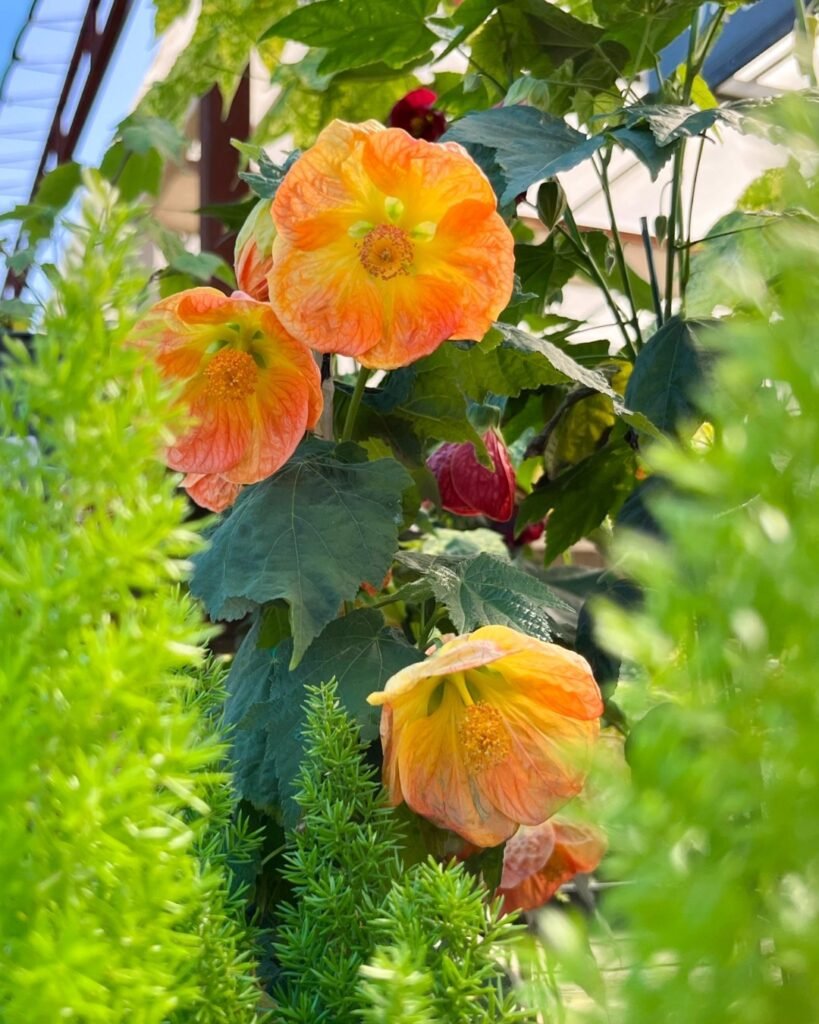Discover how to grow and care for Abutilon flowers (Indian Mallows) with expert tips from Anna Scott. Learn about varieties, planting seeds, and solving common issues. Start your vibrant garden today!
If you’ve ever walked past a garden and spotted a plant with delicate, lantern-like blooms fluttering in the breeze, chances are you’ve met the Abutilon, also known as the Flowering Maple or Indian Mallow. With its vibrant, hibiscus-like flowers and lush foliage, this plant is a showstopper. Over my 10 years of gardening, I’ve fallen in love with Abutilon’s versatility and charm. Let me share how you can grow these beauties effortlessly!
Here’s the information chart for Abutilon (Flowering Maple):
| Category | Information |
|---|---|
| Botanical Name | Abutilon spp. |
| Common Name | Flowering Maple, Abutilon |
| Plant Type | Shrub or small tree |
| Hardiness Zone | Zones 8-11 (depends on species) |
| Sun Exposure | Full sun to part shade |
| Soil Type | Well-draining, fertile |
| Watering | Moderate |
| Growth Habit | Upright, bushy |
| Height/Spread | Height: 3-10 feet (0.9-3 m); Spread: 2-6 feet (0.6-1.8 m) |
| Special Features | Bell-shaped flowers, attracts hummingbirds, deer resistant |
What Are Abutilon Flowers?

Abutilon is a tropical-to-subtropical plant that thrives in USDA zones 8–11, but don’t worry—it adapts well to containers in colder climates too! Its maple-like leaves and bell-shaped flowers come in shades of red, orange, yellow, and pink. Fun fact: The nickname “Flowering Maple” comes from its foliage, which resembles Japanese maple leaves (though they’re not related!).
Why Grow Abutilon?
- Long blooming season: Flowers appear from spring to fall.
- Attracts pollinators: Hummingbirds and butterflies adore them.
- Low maintenance: Perfect for busy gardeners.
Popular Abutilon Varieties to Try
1. Abutilon ‘Red Tiger’
This variety steals the show with its crimson-veined, orange blooms and speckled leaves. I planted ‘Red Tiger’ near my patio, and its fiery colors never fail to impress guests.
2. Abutilon ‘Bella Mixed’
Ideal for small spaces, this dwarf variety offers pastel blooms in coral, pink, and yellow. It’s a hit in my container garden!
3. Abutilon megapotamicum (Trailing Abutilon)
Perfect for hanging baskets, this trailing type has red-and-yellow flowers that dangle like holiday ornaments.
4. Abutilon ‘Savitzii’
Known for its variegated leaves with creamy edges, this variety adds texture even when not in bloom.
Pro Tip: Check out my guide on choosing companion plants for shade to pair with your Abutilon!
How to Grow Abutilon from Seeds
Starting Abutilon from seeds is rewarding and cost-effective. Here’s how I do it:
- Soak Seeds: Place seeds in warm water for 24 hours to soften the hard coat.
- Plant in Starter Mix: Sow ¼ inch deep in well-draining soil.
- Keep Warm and Moist: Use a heat mat (70–75°F) and mist regularly.
- Transplant: Move seedlings outdoors after the last frost.
Note: For faster results, buy young plants from nurseries. I’ve had great success with both methods!
Caring for Your Abutilon Plant
Light & Temperature
Abutilon loves bright, indirect light. In hot climates, afternoon shade prevents leaf scorch. If you’re growing it indoors (like I do in winter), place it near an east-facing window.
Watering
Keep the soil moist but not soggy. I water mine twice a week in summer and reduce frequency in winter. Overwatering? Watch for yellow leaves—a sign I learned the hard way!
Soil & Fertilizer
Use well-draining soil mixed with compost. I feed my Abutilon monthly with a balanced fertilizer like this one.
Pruning
Trim leggy stems in early spring to encourage bushiness. My pruning guide has step-by-step tips!
Common Abutilon Problems (And How to Fix Them)
- Yellow Leaves: Usually due to overwatering. Let the soil dry out between waterings.
- Pests: Aphids and spider mites can attack. I spray with neem oil weekly—learn more in my organic pest control post.
- Poor Blooming: Needs more light or fertilizer. Relocate or adjust feeding.
Landscaping with Abutilon
Abutilon’s versatility shines in gardens:
- Containers: Dwarf varieties like ‘Bella’ thrive on balconies.
- Hedges: Taller types create colorful, informal hedges.
- Indoor Décor: Brighten your home with potted Abutilon near sunny windows.
Story Time: Last year, I paired ‘Red Tiger’ with blue Salvia in a border bed. The contrast was breathtaking!
Final Thoughts
Abutilon is a gardener’s dream—easy to grow, stunning, and adaptable. Whether you’re a newbie or a seasoned pro like me, these plants offer endless joy. Start with seeds or a young plant, follow my care tips, and soon you’ll have a garden buzzing with life!
Got Questions? Drop them in the comments below, or explore my soil preparation tips to give your Abutilon the best start.
Happy Gardening!
Anna Scott
USA Garden Hub





